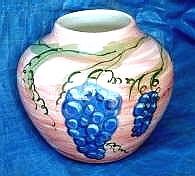Most definitely! There are, however, some things you need to be careful of.
If you plan to glaze the pieces, it's best not to overload the kiln, too much. The likelihood of the center pieces not firing as hot as the outer edges, is too high. But if you meerly plan to paint and finish, there is no problem if there are slight temperature differences in your firing.
From my experience, stacking more than 3 plates is taking a huge chance on that bottom plate cracking right in half. When stacking plates, it's best to use small ceramic rods between the layers of plates to insure they don't stick together.
Stacking large platters is risky. I've successfully stacked 2 with rods between. One thing you need to watch for, when firing that large oval platter is sagging of the brim. I usually use pieces of kiln blanket, at least at the ends and midway down the sides, as support.
There's always the temptation to stack mugs, with the bottom mug turned upside down. That works out ok but only if you make sure you have a good thick coat of kiln wash. If not, there's the possibility of the brim of the mug sticking to the shelf, causing a crack or warp. I've stacked them up as high as 4, with no problem.
Large bowls need a little watching after. Turned upside down, if you don't have a good coating of kiln wash, they are liable to stick causing a crack or warp. I have a habit of using the bowls to hold a load of miniature items. The only problem with that, is you need to make sure you pack around the outside also, to prevent warping. If you have several bowls, all the same mold, you can stack them so that the bottom bowl is sitting on its own feet, while the top bowl is matching lip to lip, upside down. If they stick, a little, hold them firmly, after unloading the kiln, and pop your hand directly onto the side, right at the edges of the bowls. They will pop apart.
Very tall vases can be laid down but only if you are firing a huge amount of small items. You can use those smaller items to pack around the vase, making a bed as well as side props out of them.
I used to produce so many miniatures and very small vases and pots, that I loaded the kiln absolutely jammed. I'd stack them about a foot deep before adding another shelf. As long as you watch that your greenware doesn't touch the elements, you should be fine.
When it comes to the bisque firing, I'm a waste not-want not person. I use every square inch of space.
Very large bowls, something like 15" or wider, needs to be propped with other pieces, evenly all the way around, as they will tend to warp.
There's nothing I love more than loading up miniatures in a kiln. I get my money's worth, for sure.
Adjust contrast of a pdf free
-
Closer to the eye of the shooter, this is because Preview is quite
literally applying a filter to each individual page of the PDF you are
saving. the proce...





